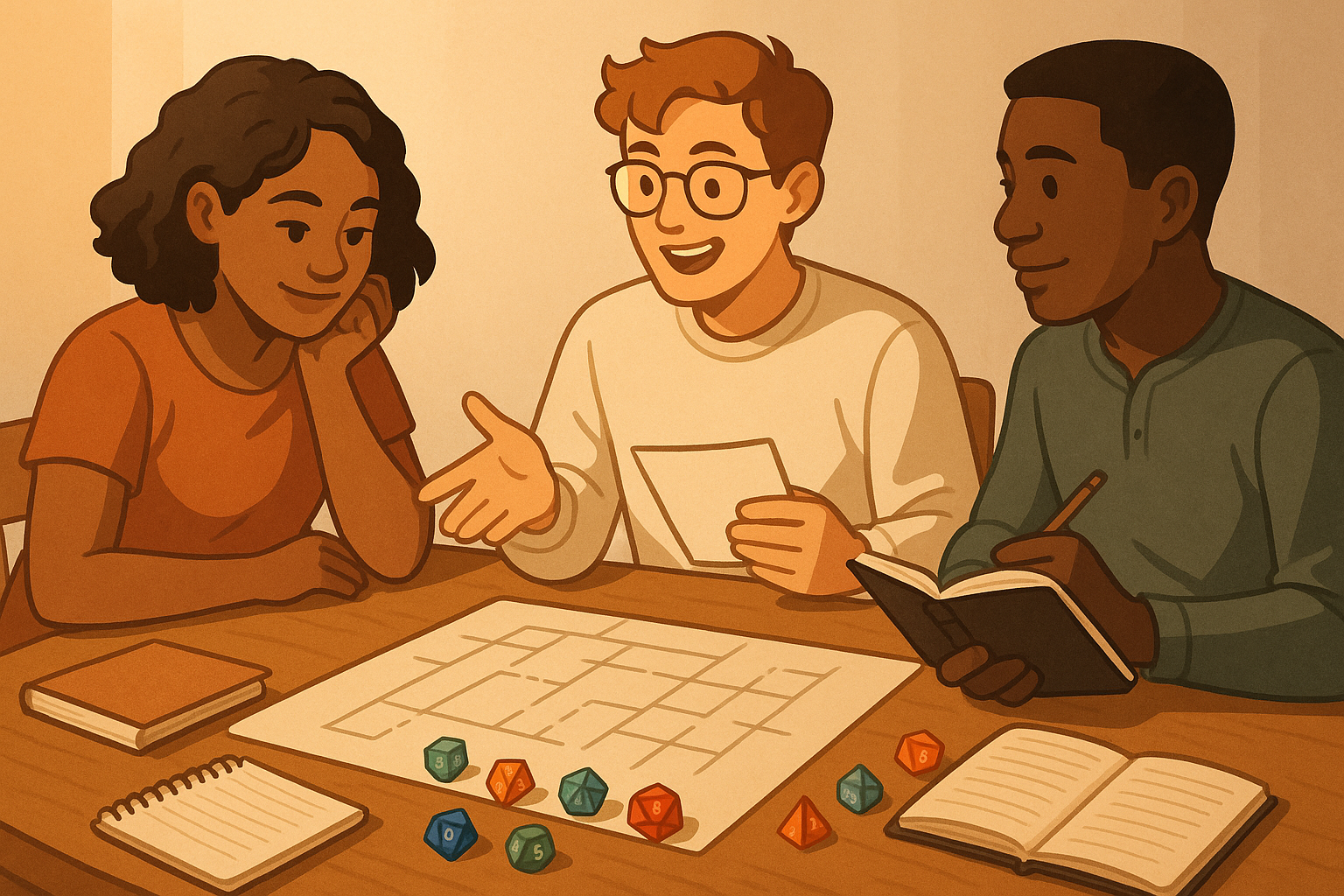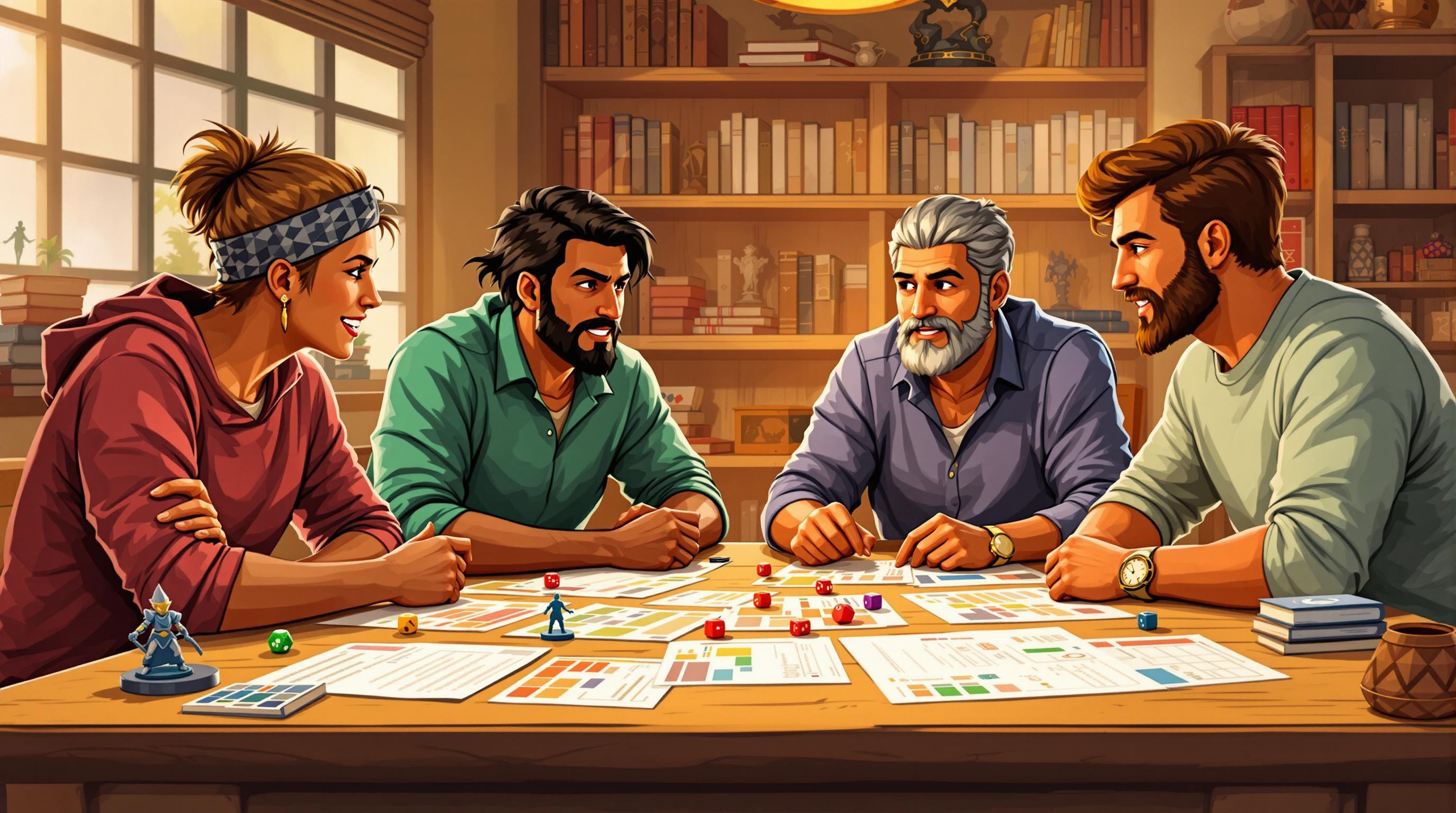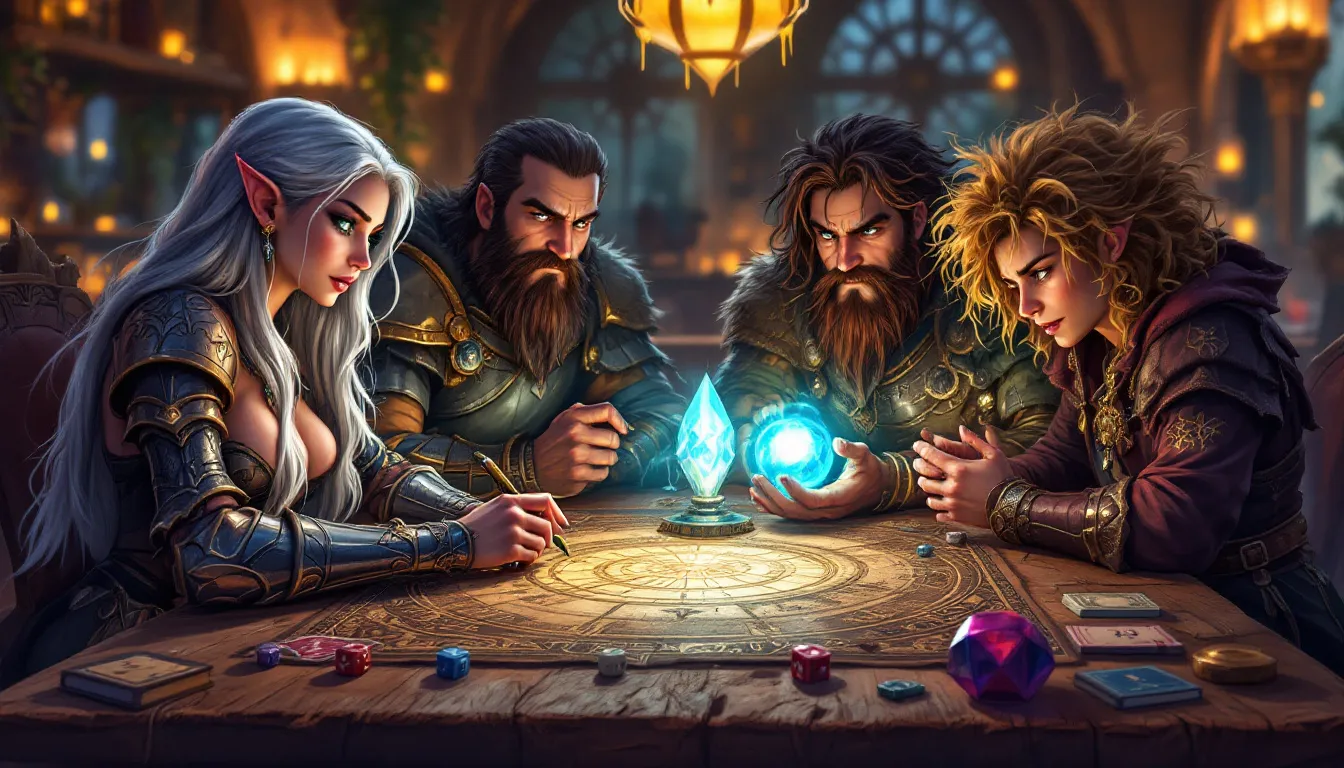Want to create balanced combat encounters for your tabletop RPG? Start here. A well-balanced encounter keeps players engaged, challenges their strategies, and enhances the story. Poor balance, on the other hand, can lead to boredom or frustration. Here’s how to get it right:
- Use Challenge Ratings (CR): Adjust for action economy by balancing single bosses, multiple enemies, or party size.
- Gather Player Feedback: Monitor engagement levels and refine based on their reactions.
- Control Combat Pacing: Alternate between intense battles, strategic pauses, and escalating threats.
- Focus on Story: Tie encounters into your campaign's theme and give players multiple ways to solve them (combat, diplomacy, or creativity).
- Leverage Tools: Use pre-made modules, homebrew content, and resources like the TTRPG Games Directory for inspiration.
Balanced combat is about blending mechanics with story. Start with these strategies to make every encounter memorable.
The New DM's Guide To Balancing Encounters
Strategies for Balancing Combat Encounters
Designing combat encounters that are both engaging and fair requires careful planning and attention to several key factors. Below are some strategies to help you strike the right balance.
Understanding Challenge Ratings (CR)
Challenge Ratings (CR) provide a useful starting point for gauging encounter difficulty, but they need to be paired with an understanding of action economy. Action economy refers to how many actions each side can take in a combat round, which can drastically influence the challenge. For instance, a single CR 3 monster might be less threatening than three CR 1 monsters because the latter have more actions to utilize.
Here’s a quick breakdown of how CR and action economy interact:
| Combat Element | Impact on Difficulty | Adjustment Suggestions |
|---|---|---|
| Single Boss | Limited actions per round | Add weaker minions for support |
| Multiple Enemies | More actions, higher threat | Lower individual monster CR |
| Party Size | Alters action economy | Adjust enemy numbers accordingly |
CR is a helpful guideline, but it's not one-size-fits-all. Pay attention to how your players respond and adjust encounters to match their playstyle.
Incorporating Player Feedback
Pay close attention to how players react during and after combat. Their engagement, choices, and emotional responses can provide valuable insights. After sessions, ask specific questions to gauge their experience and refine future encounters.
What to watch for:
- Are players staying engaged throughout the fight?
- How are they managing their resources and making strategic decisions?
- Do they seem frustrated or energized by the challenge?
- What are their thoughts on the difficulty during post-combat discussions?
Using this feedback, you can fine-tune your encounters to better align with your group's preferences.
Adjusting Combat Pacing
The pacing of combat can make or break player engagement. Tailor the rhythm of encounters to fit your campaign's tone. For example, a horror-themed campaign might benefit from waves of weaker enemies to build tension, while a high-fantasy setting might alternate between intense battles and moments of strategic planning.
Here’s how pacing elements can be used effectively:
| Pacing Type | Purpose | Implementation |
|---|---|---|
| Intense Action | Keep players on edge | Introduce multiple threats or time-sensitive objectives |
| Strategic Pause | Allow for planning | Use puzzles or negotiation opportunities |
| Threat Escalation | Build anticipation | Gradually increase the difficulty of encounters |
Balancing pacing ensures that combat remains engaging while fitting seamlessly into the narrative of your campaign.
sbb-itb-b8b00a5
Tailoring Combat for Story and Player Choice
Focusing on pacing and feedback is essential, but shaping encounters around your story and the decisions your players make adds another layer of depth to your campaign.
Designing Thematic Encounters
Encounters that match your campaign's theme make the story more immersive. Incorporate elements like dynamic terrain, unique enemy behavior, and meaningful stakes to ensure battles feel like a natural part of the narrative. For instance, a horror-themed campaign might use dim lighting and eerie enemy strategies to keep the tension high.
| Theme Element | How to Use It | Impact on Story |
|---|---|---|
| Environment | Add dynamic terrain or weather effects | Makes battles more memorable |
| Stakes | Define clear outcomes for success or failure | Pushes the narrative forward |
Giving Players More Choices
Let players approach encounters in different ways. Design scenarios where combat, diplomacy, or inventive tactics can all lead to success. This allows their decisions to directly influence the story.
| Approach | Key Features | Effect on Players |
|---|---|---|
| Combat | Standard fighting mechanics | Tests their tactical skills |
| Diplomacy | Build NPC goals and motivations | Rewards social interaction |
| Environmental Tactics | Include obstacles or manipulatable terrain | Sparks creative problem-solving |
For inspiration, check out the TTRPG Games Directory (https://ttrpg-games.com). It highlights systems that balance combat and storytelling, helping you choose mechanics that fit your campaign style.
Tools and Resources for Balancing Encounters
Game masters rely on a range of tools and resources to craft combat encounters that are both engaging and well-balanced. These tools complement techniques like adjusting CR (Challenge Rating) and pacing, ensuring gameplay stays exciting and challenging.
TTRPG Games Directory

The TTRPG Games Directory (https://ttrpg-games.com) is a treasure trove of information on various combat systems. It helps game masters discover new mechanics that can be used to fine-tune encounter balance and pacing. Browsing through the directory can spark ideas and offer practical solutions for improving your encounters.
Pre-Made and Homebrew Content
Pre-made content and homebrew creations can simplify the process of designing encounters. Pre-made modules, for instance, come with pre-tested scenarios that save time and provide a reliable starting point. Meanwhile, homebrew content allows for customization, letting you adapt encounters to your party's unique dynamics.
| Content Type | Key Considerations | Balance Impact |
|---|---|---|
| Pre-Made Modules | Ready-to-use encounters | Provides consistent challenges |
| Custom NPCs | Designed for your party | Adjusts difficulty for your group |
| Environmental Challenges | Adds dynamic elements | Encourages tactical gameplay |
Conclusion: Creating Balanced and Memorable Combat
Designing combat encounters that feel fair and engaging means combining solid mechanics with compelling storytelling. Game masters who strike this balance can deliver challenges that stick with players while keeping the gameplay rewarding.
Key Approaches to Balanced Combat
Balanced combat comes down to adjusting difficulty, pacing battles effectively, and tying encounters into the story. Adding regular player feedback helps fine-tune these elements, ensuring the gameplay matches the party's abilities and moves the narrative forward.
| Combat Element | Approach | Effect on Gameplay |
|---|---|---|
| CR Adjustments | Scaling difficulty with minions | Keeps encounters challenging yet fair |
| Story Integration | Building story-focused battles | Deepens player involvement |
| Combat Pacing | Varying intensity levels | Keeps players engaged |
Open communication with players about their combat experiences is essential [1]. By weaving together balanced mechanics and story-driven encounters, game masters can turn combat into moments that not only challenge players but also push the story and characters forward. These encounters create stakes that feel real and moments players will remember long after the game ends.


